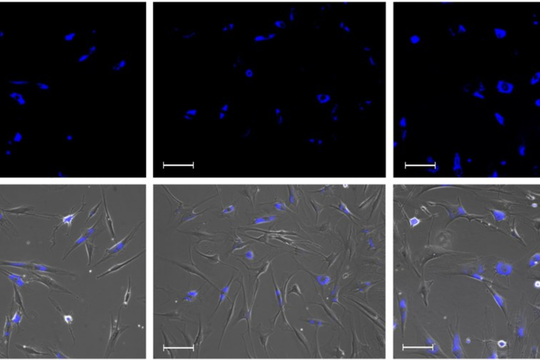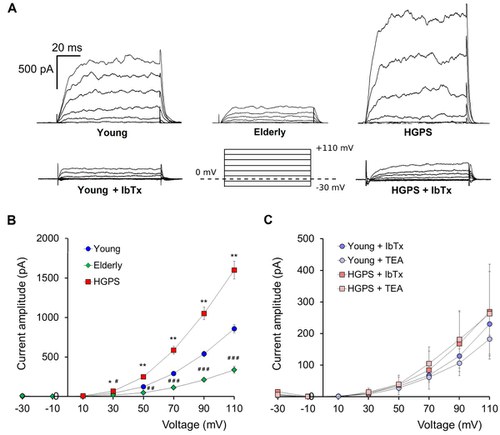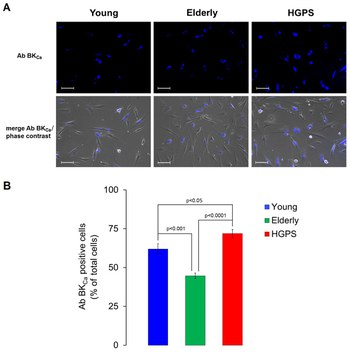Sovraespressione del canale BK sulla membrana plasmatica di fibroblasti con sindrome progeria di Hutchinson-Gilford
La sindrome di Hutchinson-Gilford è un raro disordine genetico caratterizzato da uno stato clinico di invecchiamento precoce. Nelle cellule della cute dei pazienti affetti, con misure di patch clamp e di immunofluorescenza, il numero dei canali ionici BK aumenta, mentre la capacità proliferativa diminuisce acquisendo un fenotipo caratteristico della senescenza.
In questo studio in vitro sono stati utilizzate colture cellulari di fibroblasti del derma umani (hDF) ottenuti dalla biopsia del derma di soggetti affetti dalla sindrome di invecchiamento precoce Hutchinson-Gilford Progeria (HGPS) e da soggetti sani sia giovani che anziani. I canali ionici sono proteine di membrana che, in risposta a determinati stimoli, permettono il passaggio degli ioni attraverso la membrana plasmatica delle cellule.
I canali potassio a larga conduttanza (BK) sono normalmente espressi sulle membrane plasmatiche di molti tipi cellulari, compresi i fibroblasti dove partecipano alla regolazione di diverse funzioni cellulari come proliferazione e motilità. Per determinare il numero di canali BK espressi sulla membrana dei soggetti reclutati abbiamo utilizzato: i) la tecnica del patch clamp, che permette di quantificare il contributo di un determinato canale ionico all’attività elettrofisiologica della cellula; ii) la live-imaging immunofluorescenza, che permette di visualizzare tramite un anticorpo coniugato con un probe fluorescente la proteine canale di interesse in cellule vitali.
Per determinare il contributo dell’attività dei canali BK sulla capacità proliferativa dei hDFs ottenuti dai diversi soggetti, abbiamo quantificato e confrontato tra loro, l’aumento durante l’invecchiamento del numero di canali per ogni popolazione cellulare. I risultati ottenuti rivelano che il numero di canali BK nei hDFs ottenuti da soggetti affetti da sindrome progeria è maggiore rispetto a quelli espressi nelle popolazioni ottenute da giovani e anziani.
Come conseguenza la proliferazione di queste cellule è minore rispetto a quella osservata in cellule ottenute da giovani sani. Questi risultati portano a ipotizzare che le cellule affette da progeria adottino strategie, come l’aumento dei canali BK, per simulare uno stato di senescenza. In questo modo possono essere riconosciute dal sistema immunitario ed eventualmente eliminate.



